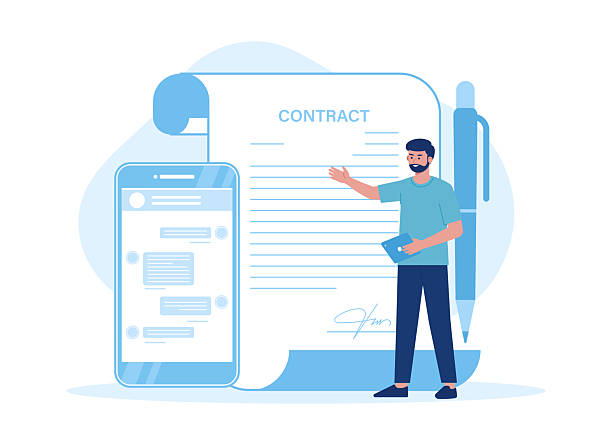Unparalleled Importance of Secure Website Design in Today’s Digital World

In the current era where an online presence has become vital for businesses and individuals, secure website design is no longer an option, but an undeniable necessity.
Websites have become the primary showcase for activities, and any security flaw can undermine user #trust, damage #sensitive_information, and even lead to irreparable financial and reputational losses.
Today, with the ever-increasing sophisticated #cyber_attacks, the need for a comprehensive and proactive approach in secure website design is felt more than ever.
This explanatory section examines the reasons for this importance and the consequences of neglecting it.
Websites can be targets of various attacks including SQL injection, Cross-Site Scripting (XSS), and #DDoS attacks, each of which can disrupt site performance, steal information, or destroy brand reputation.
Computer security, and especially web security, requires a multi-layered approach that begins right from the initial process of secure website design and continues through the maintenance and update stages.
Any negligence in this area can turn into a major weakness and expose the site to risk.
Therefore, investing in the necessary knowledge and tools to ensure secure website design is, in fact, an investment in the future and sustainability of your online business.
Does your current corporate website not reflect your brand’s credibility and power as it should? Rasaweb solves this challenge for you with professional corporate website design.
✅ Increased credibility and visitor trust
✅ Targeted attraction of more customers
⚡ Click for a free consultation!
Basic Principles and Solid Foundations of Web Security
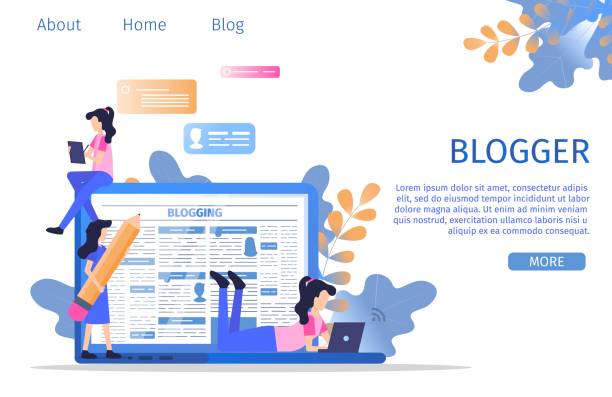
To achieve a secure website design, it is necessary to become familiar with the fundamental principles of #web_security.
These principles form the backbone of any secure website, and adhering to them is essential from the very beginning of #site_development.
One of the most important of these principles is strong #authentication_and_authorization.
Ensuring that only authorized users have access to specific information or functionalities prevents unauthorized access.
Data encryption, especially sensitive information such as passwords and financial data, whether in transit or at rest, is vital.
Using HTTPS, secured by an #SSL/TLS_certificate, ensures that communication between the user’s browser and the server is encrypted and protected from eavesdropping.
#Web_Application_Firewalls (WAFs) also play a crucial role in filtering malicious traffic and blocking known attacks.
Furthermore, performing #regular_updates for the operating system, frameworks, plugins, and any other software used on the site prevents discovered vulnerabilities.
This educational section focuses on explaining and clarifying these core foundations so that developers and site administrators can take steps towards secure website design with deeper knowledge and protect their websites from threats.
Common Vulnerabilities and Prevention Methods Based on OWASP Top 10

Understanding #common_vulnerabilities in websites is the first step in combating them and ensuring a secure website design.
The #OWASP (Open Web Application Security Project) organization periodically publishes a list of the top ten critical security vulnerabilities that developers and site administrators should pay special attention to.
Among these vulnerabilities, #SQL_injection, which allows an attacker to access the database, can be mentioned.
#Broken_Access_Control is another common weakness where users can access information or functionalities they are not authorized for.
#Broken_Cryptography occurs when encryption is not properly implemented, exposing sensitive information.
#XSS (Cross-Site Scripting) also allows attackers to execute malicious code in users’ browsers.
To prevent these attacks, #strict_input_validation should be performed on user inputs, secure frameworks should be used, and #secure_coding principles should be followed.
This specialized section, while introducing these vulnerabilities, provides practical solutions for #preventing them to help improve secure website design.
| Row | Vulnerability (OWASP Top 10) | Brief Description | Prevention Method |
|---|---|---|---|
| 1 | Broken Access Control | Insufficient restriction on access by authenticated users. | Implementing precise server-side access control mechanisms. |
| 2 | Cryptographic Failures | Improper or insufficient use of encryption for sensitive information. | Applying strong encryption for data in transit and at rest (SSL/TLS). |
| 3 | Injection | Sending malicious data through user inputs (e.g., SQL Injection). | Input validation, use of Prepared Statements and ORM. |
| 4 | Insecure Design and Architecture Vulnerabilities | Flaws in the overall system design or application architecture. | Implementing secure design principles from the outset, layered security architecture. |
| 5 | Security Misconfiguration | Insecure default configurations, misconfiguration errors, unnecessary features enabled. | Secure configuration of servers and applications, disabling insecure features. |
The Role of SSL/TLS and Security Protocols in Secure Website Design
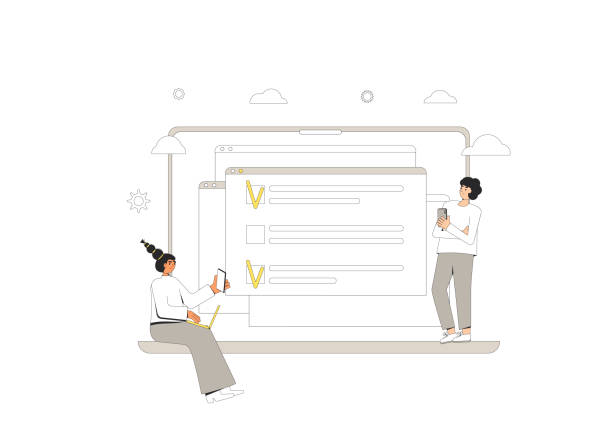
One of the most crucial elements in #secure_website_design and gaining user trust is the use of #SSL/TLS_certificates and the #HTTPS protocol.
This analytical section delves into these technologies.
SSL (Secure Sockets Layer) and its newer, more secure version, TLS (Transport Layer Security), are protocols that #encrypt the communication between the user’s browser and the website server.
This encryption ensures that #exchanged_data, such as login credentials, credit card information, or other sensitive data, remains safe from #eavesdropping or alteration by attackers.
Websites using HTTPS are indicated in the browser’s address bar with a green padlock or the word “Secure”, which reassures users.
In addition to security, using HTTPS also has #SEO benefits, as search engines like Google prefer secure websites in their rankings.
For a secure website design, correct installation of an SSL certificate and proper server configuration to use TLS 1.2 or higher is essential.
These protocols not only protect user privacy and security but also significantly help in #maintaining_website_credibility and preventing “Man-in-the-Middle” attacks.
Without the use of these protocols, any sent and received information can easily be intercepted and manipulated by malicious parties, which would be a major weakness in any secure website design.
Do your e-commerce site visitors leave before making a purchase? Don’t worry anymore! With Rasaweb’s professional e-commerce website design services, solve the problem of visitor-to-customer conversion for good!
✅ Significant increase in conversion rates and sales
✅ Unparalleled and engaging user experience
⚡ Contact us now for a free consultation!
Best Practices for Website Security Maintenance and Updates
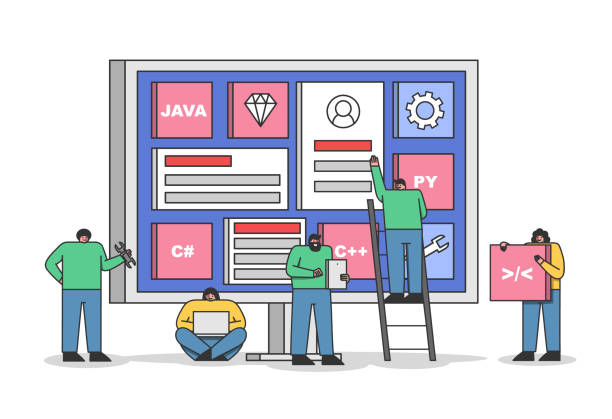
Secure website design is not limited to the initial development phase; #continuous_maintenance_and_updates are fundamental pillars of long-term #website_security.
This guide section provides best practices to ensure the stability of your site’s security.
The first step is #regular_updates of all website components: from the Content Management System (CMS) like WordPress or Joomla to all plugins, themes, and frameworks used.
Developers constantly release #security_patches to address discovered vulnerabilities, and ignoring them can open the door for attackers.
Second, #regular_backups of all site data and files are extremely vital.
In the event of an attack or data loss, a #reliable_backup can restore your site in the shortest possible time.
Third, using #strong_passwords and #two-factor_authentication for all user accounts, especially administrative accounts, is essential.
Fourth, #continuous_monitoring of server logs and suspicious activities can help in early detection of intrusions.
Periodic #security_scanning tools can also identify vulnerabilities before they are discovered by attackers.
These proactive and reactive approaches together create a strong protective layer for your site and ensure the stability of secure website design.
Latest Cyber News and Threats Affecting Site Security
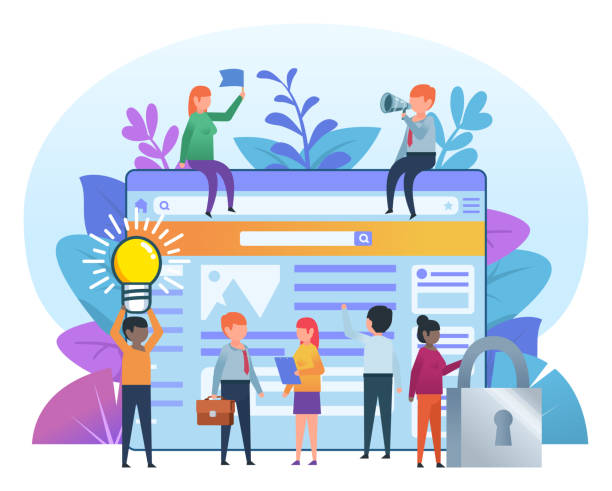
The world of #cybersecurity is constantly changing and evolving.
#Cyber_attackers constantly devise new methods of intrusion, and to maintain a secure website design, one must stay informed about the latest #news_and_threats.
This news section examines some of the latest trends in cyberattacks that can affect websites.
For example, the rise of #ransomware_attacks that encrypt data and demand ransom for their release has created serious concerns for businesses.
#Phishing attacks have become more targeted and sophisticated, making them harder to detect.
Also, the exploitation of #Zero-Day_Exploits, for which no security patch has yet been released, has become a serious threat.
#Botnets and distributed #DDoS_attacks are still used as tools to take down websites.
Furthermore, the emergence of #Artificial_Intelligence in cyberattacks has enabled the execution of automated and highly scalable attacks.
Awareness of these threats and readiness to counter them is an integral part of a comprehensive strategy for #secure_website_design.
Studying reputable security resources and participating in webinars can help keep your information up to date.
Is 100% Security Possible? Stories of Major Breaches and Their Lessons

A question that has always occupied the minds of #cybersecurity experts: Is #100%_security truly possible in secure website design? This section, with a questioning and engaging approach, examines this topic and, by citing examples of #major_breaches, shares lessons for us.
The truth is that, given the ever-increasing complexity of systems and continuously evolving attackers, achieving absolute security is almost impossible.
There is always a #hidden_vulnerability or a human error that can lead to a security breach.
Large companies such as #Sony, #Yahoo, #eBay, and even government organizations have fallen victim to cyberattacks, indicating that no system is completely impregnable.
For instance, the Yahoo breach in 2013 and 2014, which affected millions of user accounts, or the attacks on Sony Corporation that led to the exposure of sensitive information, all demonstrate that even with massive investments in security, the risk still exists.
The main lesson is that instead of striving for 100% security, one should focus on #risk_reduction and increasing #system_resilience.
This means implementing multiple layers of defense, continuous monitoring, incident response planning, and employee training.
A #defense-in-depth_approach, where each security layer supports previous layers and has its own defensive mechanisms, is essential.
This section aims to provide a realistic perspective on #web_security by reviewing these stories and emphasizes the importance of a #continuous_and_multi-layered approach in secure website design.
| Company/Organization | Year of Breach | Primary Damage | Lesson Learned |
|---|---|---|---|
| Yahoo | 2013-2014 | Exposure of over 3 billion user account data. | Importance of #strong_encryption, #continuous_monitoring, and #mandatory_password_changes. |
| Sony Pictures | 2014 | Exposure of emails, employee personal information, and unreleased films. | Importance of #internal_network_security, #employee_training, and #secure_backup. |
| eBay | 2014 | Exposure of 145 million user account data. | Necessity of #database_security and #multi-factor_authentication. |
| US Government Servers (OPM) | 2015 | Exposure of millions of federal employees’ data. | Importance of #strengthening_legacy_systems and #periodic_security_audits. |
Database Security and Protection of Sensitive User Information

#Databases are the beating heart of every website and contain #sensitive_user_information, including personal, financial, and activity records.
Therefore, #database_security is considered one of the most crucial aspects in secure website design.
This specialized section examines methods and strategies for protecting this data.
The first step is #encrypting_data at rest and in transit.
Sensitive information should not be stored in plain text.
Using #strong_encryption_algorithms and #secure_encryption_keys is essential.
Second, #precise_access_control to the database; meaning only users with the minimum necessary privileges should be able to access specific parts of the data.
#Separation_of_duties and applying the #principle_of_least_privilege minimize the risk of unauthorized access.
Third, using #Database_Firewalls and #Intrusion_Detection_Systems (IDS) to monitor suspicious activities and prevent injection attacks.
Fourth, #validation_and_sanitization_of_user_inputs is crucial to prevent attacks such as #SQL_Injection.
Fifth, #regular_updates_of_the_Database_Management_System (DBMS) and applying the latest security patches.
Also, #regular_and_secure_backup of the database and storing them in a secure and separate location is necessary for quick recovery in case of a disaster.
By adhering to these principles, you can ensure that your secure website design includes a strong defensive layer to protect your most valuable digital assets.
Tired of your e-commerce website not generating as much revenue for you as it could? Rasaweb, specializing in professional e-commerce website design, solves this problem for good!
✅ Increased sales rate and revenue
✅ High loading speed and unparalleled user experience
⚡ Get a free e-commerce website design consultation
Web Security Tools and Tests for Your Site’s Stability

To ensure that a secure website design is properly implemented and remains secure over time, the use of #security_tools_and_tests is essential.
This educational section introduces some of these vital tools and security testing approaches.
#Web_Vulnerability_Scanners such as Acunetix or Nessus automatically scan the site to identify known vulnerabilities.
These tools can identify common weaknesses such as XSS, SQL Injection, and misconfigurations.
#Penetration_Testing or #Pentest is a manual and deeper approach in which security experts simulate real attacks to find and exploit system weaknesses.
These tests provide a more comprehensive view of the site’s security posture.
#Static_Application_Security_Testing (SAST) and #Dynamic_Application_Security_Testing (DAST) tools are also used during development and after deployment to find vulnerabilities in source code or during application execution.
#Continuous_security_monitoring, using SIEM (Security Information and Event Management) systems, also helps in identifying suspicious traffic patterns and ongoing attacks.
By leveraging these tools and conducting periodic tests, you can proactively address potential weaknesses before they are discovered by attackers.
These measures are crucial for ensuring the stability and resilience of a secure website design and should be considered as part of the Software Development Life Cycle (SDLC).
The Future of Secure Website Design and Final Recommendations for a Reliable Online Presence

Secure website design is a dynamic and continuous process that, with the #evolution_of_cyber_threats, requires #continuous_updating of knowledge and approaches.
This descriptive section addresses the future outlook of web security and key recommendations for maintaining a reliable online presence.
In the future, we will witness increased use of #Artificial_Intelligence and #Machine_Learning on both sides of the field: both in identifying and preventing attacks, and in the complexity of the attacks themselves.
This necessitates that secure website design professionals enhance their knowledge in #AI_Security and #DevSecOps (integrating security at every stage of development).
#Passwordless_authentication and wider use of #biometrics are other trends that will improve login security.
#API_security and #microservices will also gain increasing importance, given modern software architectures.
The final recommendation is to consider security not as an additional feature, but as an #essential_and_fundamental_component of every web development project.
#Continuous_training_of_the_development_team, #investment in advanced security tools, and #fostering_a_security_culture within the organization are key to success in this path.
Remember that #security_is_a_journey_not_a_destination, and one must always be prepared to counter new threats.
By following these recommendations and keeping pace with the latest developments, you can build online platforms that are not only efficient but also #safe_and_reliable against cyber risks, thereby contributing to your long-term success.
Frequently Asked Questions
| No. | Question | Answer |
|---|---|---|
| 1 | What does secure website design mean? | Secure website design refers to a set of measures and methods employed to protect a website against cyberattacks, unauthorized access, data breaches, and other security threats. Its goal is to maintain the confidentiality, integrity, and availability of information. |
| 2 | Why is website security important? | Website security is vitally important for maintaining user trust, protecting sensitive information (such as personal and financial data), preventing financial losses, preserving brand reputation, and complying with legal regulations (such as GDPR). A security breach can lead to customer loss and heavy penalties. |
| 3 | What are some of the most common security attacks against websites? | Common attacks include SQL Injection, XSS (Cross-Site Scripting), CSRF (Cross-Site Request Forgery), Brute Force, DDoS attacks, Broken Authentication, and Missing Function Level Access Control. |
| 4 | What is the role of SSL/TLS certificate in website security? | The SSL/TLS certificate (which results in an HTTPS address) is used to encrypt data exchanged between the user and the website server. This prevents eavesdropping or tampering with sensitive information such as passwords and credit card details during transmission and verifies the website’s authenticity. |
| 5 | How can SQL Injection attacks be prevented? | To prevent SQL Injection, one should use Prepared Statements or ORM (Object-Relational Mapping) with validated parameters. Additionally, strict filtering and validation of user inputs (Input Validation) and applying the principle of least privilege in the database are essential. |
| 6 | What is the HTTP Strict Transport Security (HSTS) protocol and how does it help security? | HSTS is a web security policy that instructs browsers to load the website only through an HTTPS connection, even if the user enters the address with HTTP. This prevents Downgrade attacks and cookie theft on public Wi-Fi networks. |
| 7 | What is the importance of regular software and plugin updates in website security? | Regular updates of the Content Management System (CMS), plugins, themes, and other software components of the site are crucial for addressing discovered security vulnerabilities. Developers continuously release security patches, and failing to update can leave the site vulnerable to known attacks. |
| 8 | What measures can be taken to increase the security of the website administration section (admin panel)? | Changing the default admin panel path, using strong passwords and two-factor authentication (2FA), restricting access to specific IPs, using CAPTCHA on login pages, monitoring logs, and continuous CMS updates are among these measures. |
| 9 | Why is filtering and validating user inputs (Input Validation) important? | Filtering and validating inputs helps prevent the injection of malicious code or unauthorized data through forms, URLs, or other user input sections. This prevents attacks like XSS and SQL Injection that exploit invalid inputs. |
| 10 | Name some common tools or services for checking and enhancing website security. | Tools such as Web Application Firewalls (WAF), vulnerability scanners (e.g., Acunetix, Nessus), Intrusion Detection and Prevention Systems (IDS/IPS), CDN services with security features (e.g., Cloudflare), and periodic Penetration Testing can enhance website security. |
And other services of Rasaweb Advertising Agency in the field of advertising
Smart Link Building: A combination of creativity and technology for campaign management through precise audience targeting.
Smart UI/UX: A professional solution for increasing website traffic focusing on marketing automation.
Smart Conversion Rate Optimization: A dedicated service for online growth based on SEO-driven content strategy.
Smart Digital Advertising: A professional solution for improving SEO ranking focusing on Google Ads management.
Smart Link Building: Designed for businesses looking to manage campaigns by utilizing real data.
And over hundreds of other services in the field of internet advertising, advertising consultation, and organizational solutions
Internet Advertising | Advertising Strategy | Sponsored Content
Sources
IranHost Secure Web Design Guide
ParsPack Website Security Tips
WebRamz Security Guidelines
Rayvarz Secure Site Building Articles
? In today’s competitive world, a strong online presence is vital for every business. Rasaweb Aferin Digital Marketing Agency offers comprehensive services including fast website design, professional SEO, social media management, and targeted advertising campaigns, paving your way to success. With us, your business will be seen at its peak.
📍 Tehran, Mirdamad Street, next to Bank Markazi, Kazeroon Jonoubi Alley, Ramin Alley, No. 6

